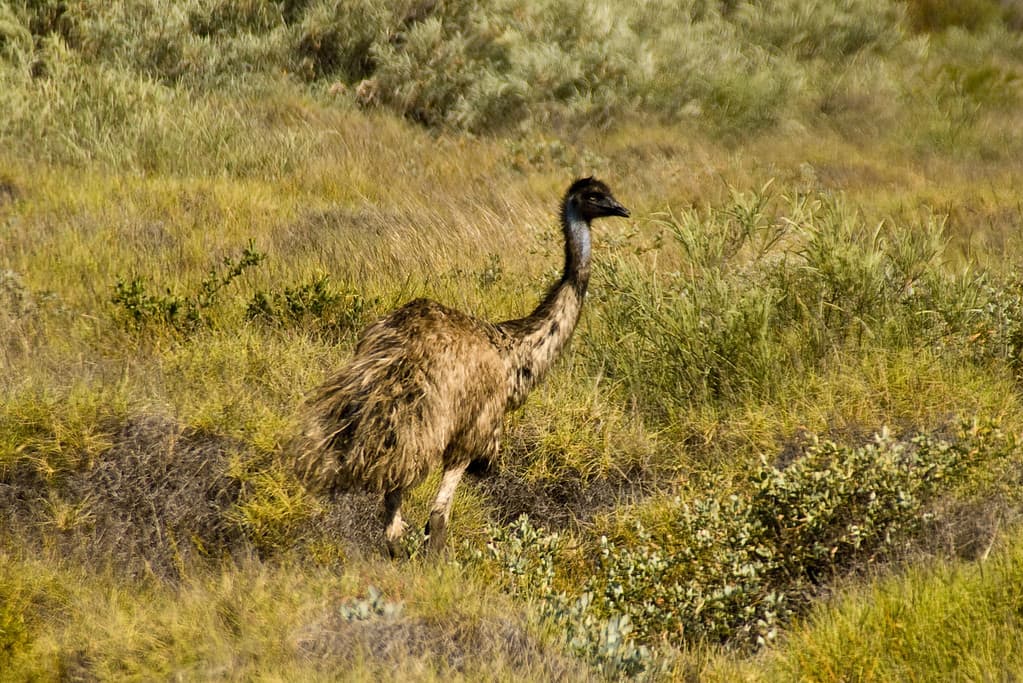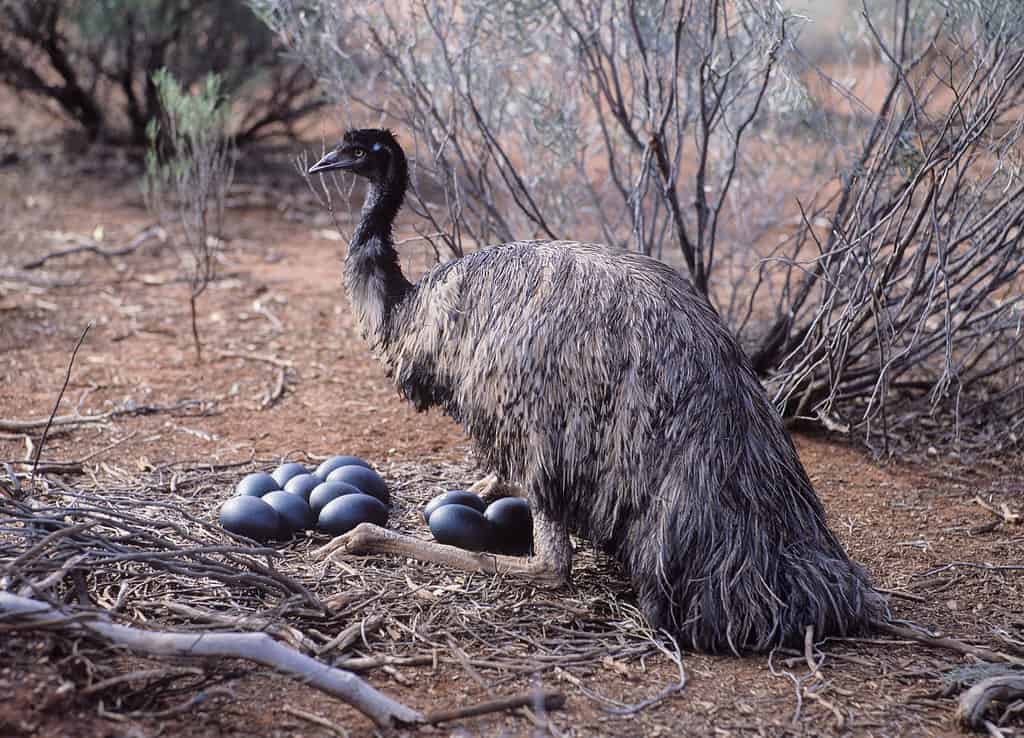This short video shows a seemingly innocent interaction between an emu and a sheep. The sheep follows the giant bird around, which appears to bother the emu. It pecks the sheep on the head and slashes out with one foot. The sheep, unfazed by the attacks, continues about its business. In the end, neither animal comes to any harm, and both appear to get along. Let’s watch the funny video below before learning some interesting emu facts!
Watch the Silly Emu and Sheep Encounter Below!
What is an Emu?

Emus are endemic to Australia though some farmers use them to protect livestock around the world.
©samvaltenbergs/ via Getty Images
An emu is a large, flightless bird endemic to Australia. Endemic refers to a creature only found in a certain place. Claiming the title of largest native bird in the Land Down Under, emus stand as tall as 6 feet 3 inches! That makes them the second-tallest bird on Earth, next to the ostrich. They also reach amazing speeds of about 30 mph (miles per hour) when running.
What Are 3 Interesting Emu Facts?

Male emus build the nest, incubate the eggs, and tend to the young.
©JohnCarnemolla/ via Getty Images
Without a doubt, emus intrigue people worldwide. However, what are the most incredible facts about them? Let’s check out three of the most fascinating ones!
Emus Can Deliver a Lethal Kick
One captivating emu fact regards their strong, muscular legs. With their long legs that end in sharply clawed feet, a kick from an emu causes significant damage. Emu toes with claws reach lengths up to 6 inches long! Emus might well rank as one of the strongest animals on Earth. Their front kick delivers 1000-1200 psi (pounds per square inch) of force. That’s certainly enough to crush a predator’s skull, should it get close enough. Not only that, but their strong legs allow them to jump nearly 7 feet into the air. Emus are also the only birds with calf muscles.
Males Tend to the Young
Male emus (cocks) build the nest, sit on the eggs, and raise the babies (chicks). In fact, emu chicks spend up to seven months living with their father and learning from him. The male often gathers a harem of females (hens) that lay up to 25 eggs combined for him to care for. He will even fight the hens if they stick around too long after laying. Cocks actually tolerate and accept abandoned chicks that seek refuge with him and his flock, as well. A cock and his chicks are the largest grouping of emus as they usually travel alone or in pairs.
The Craziest Emu Fact: Australians Fought a War Against Emus and Lost
Sounds crazy, right? That may be so, but it’s absolutely an emu fact! In 1932, the Great Emu War began when farmers became irritated that emus were eating their crops. The emus astonishingly seemed able to avoid bullets and ambushes. Farmers killed less than 1,000 before someone suggested they use fencing instead. The farmers spent roughly 10 bullets per emu killed and did not solve the problem this way. Therefore, the war is considered a win for the emus.
However, the federal government also issued a bounty for the birds, and more than 50,000 additional emus perished. The emus still managed to thrive and remain densely populated throughout Australia today. The International Union for the Conservation of Nature and Natural Resources (IUCN) lists them as least concern. Some Australians consider them pests.
The photo featured at the top of this post is © IngeBlessas/Shutterstock.com
Thank you for reading! Have some feedback for us? Contact the AZ Animals editorial team.






